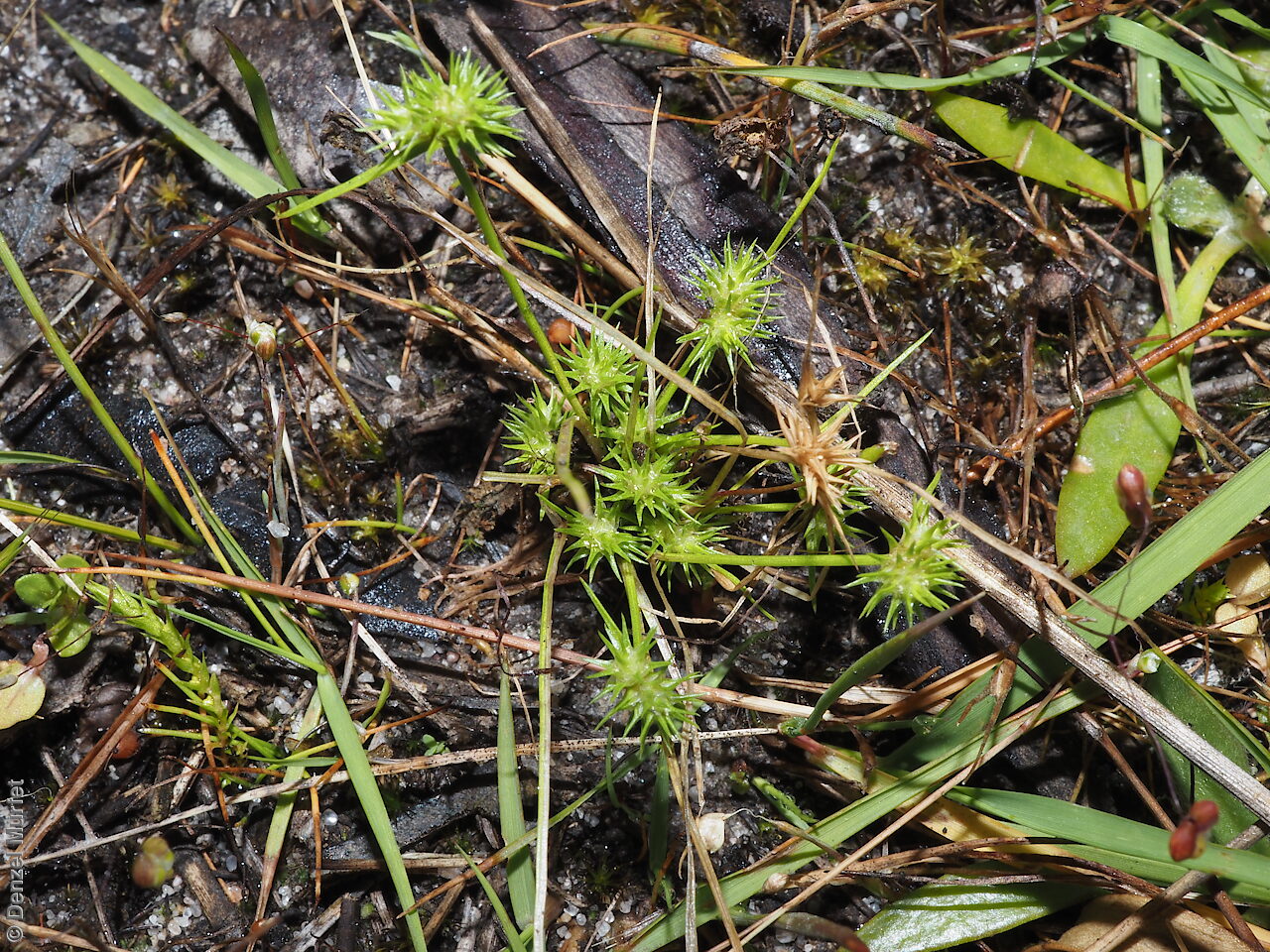
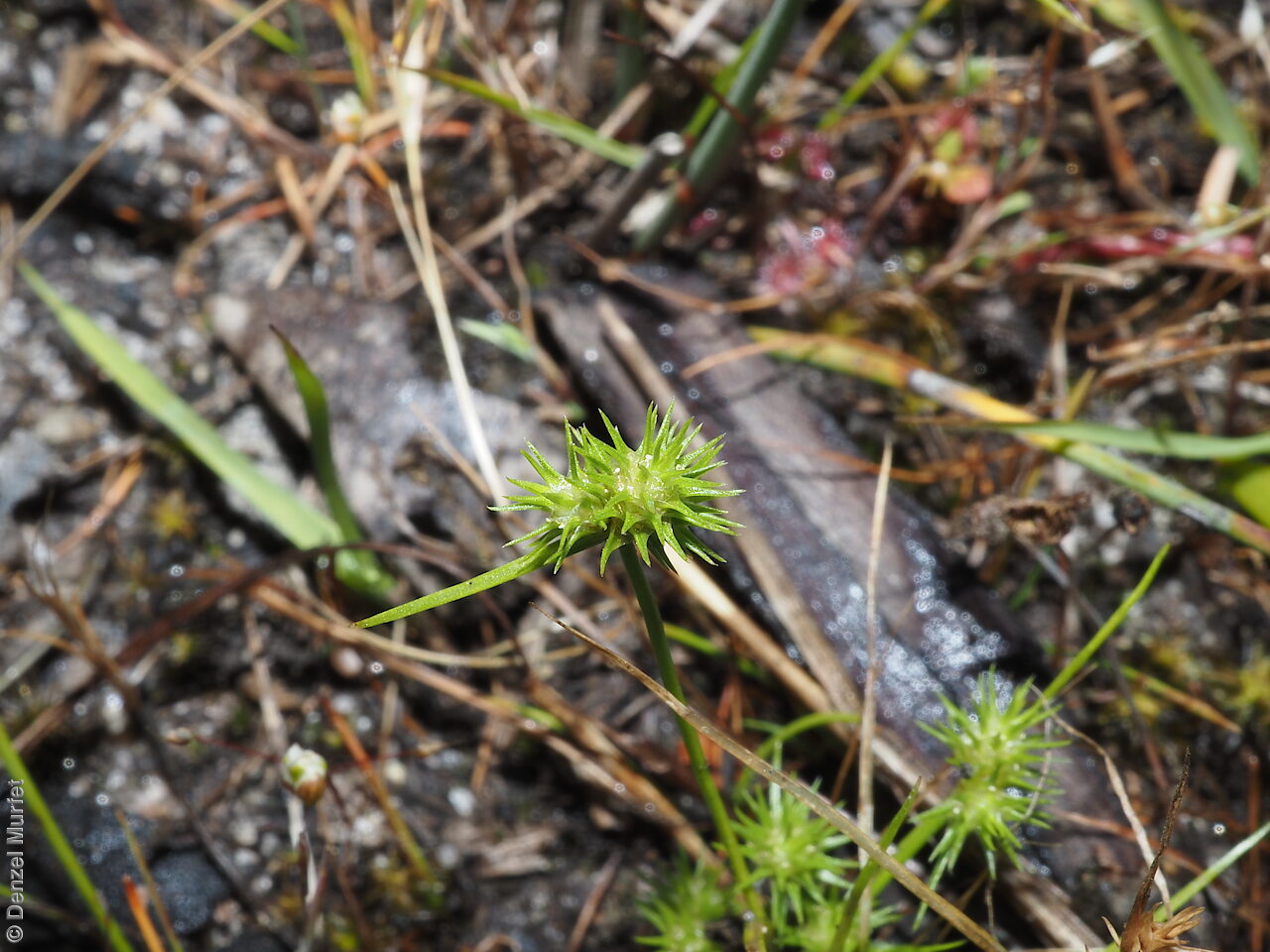
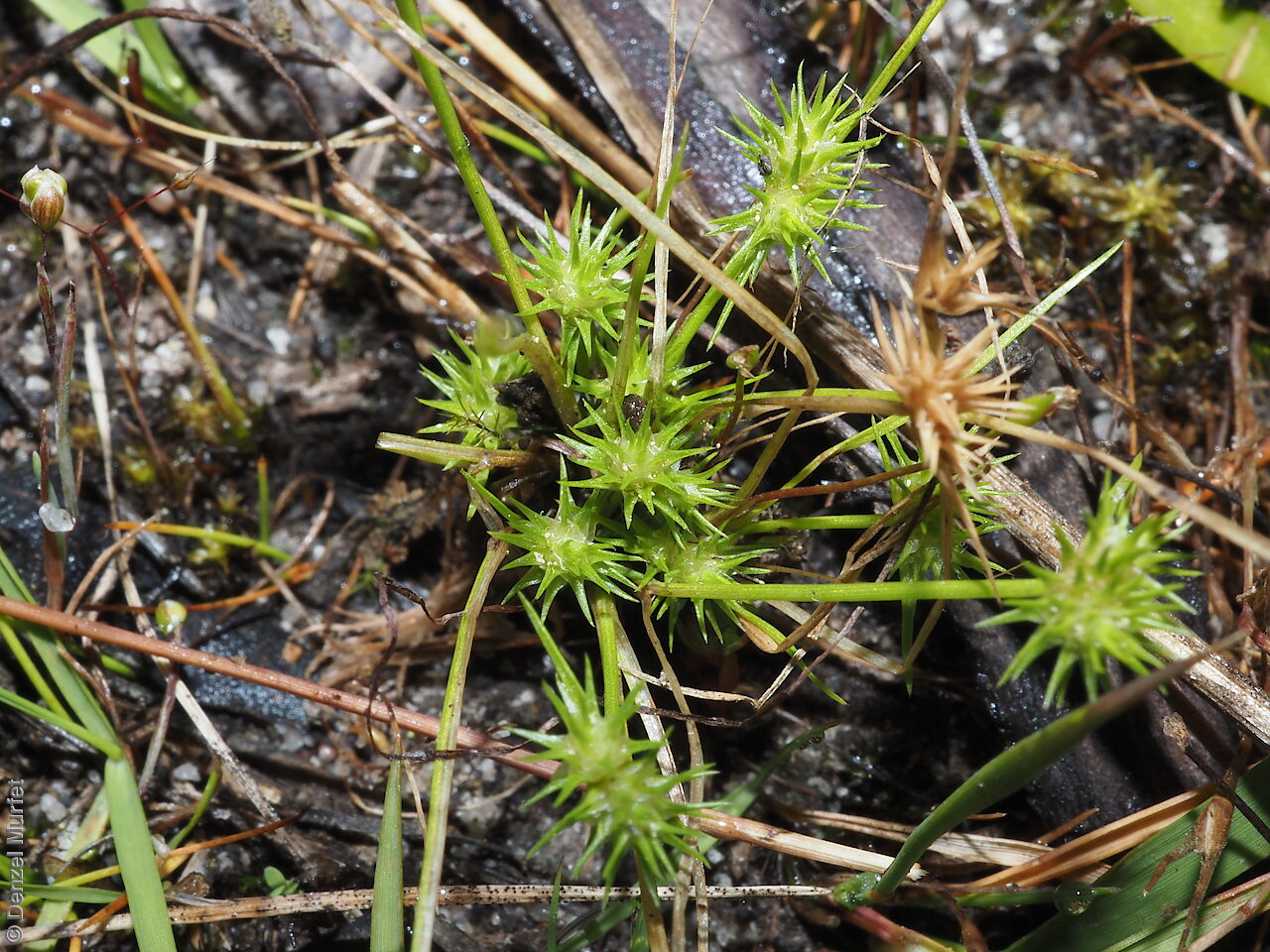
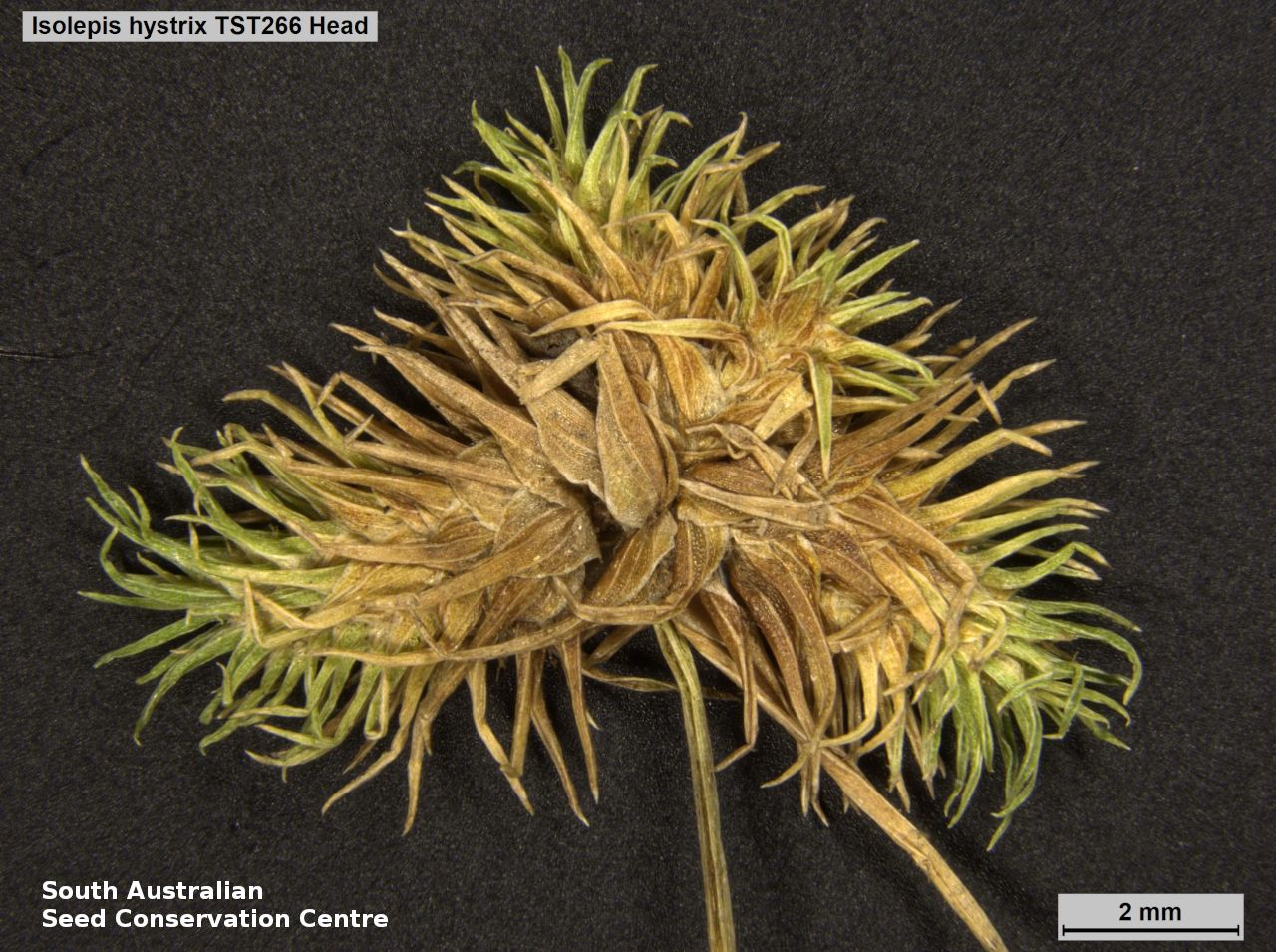
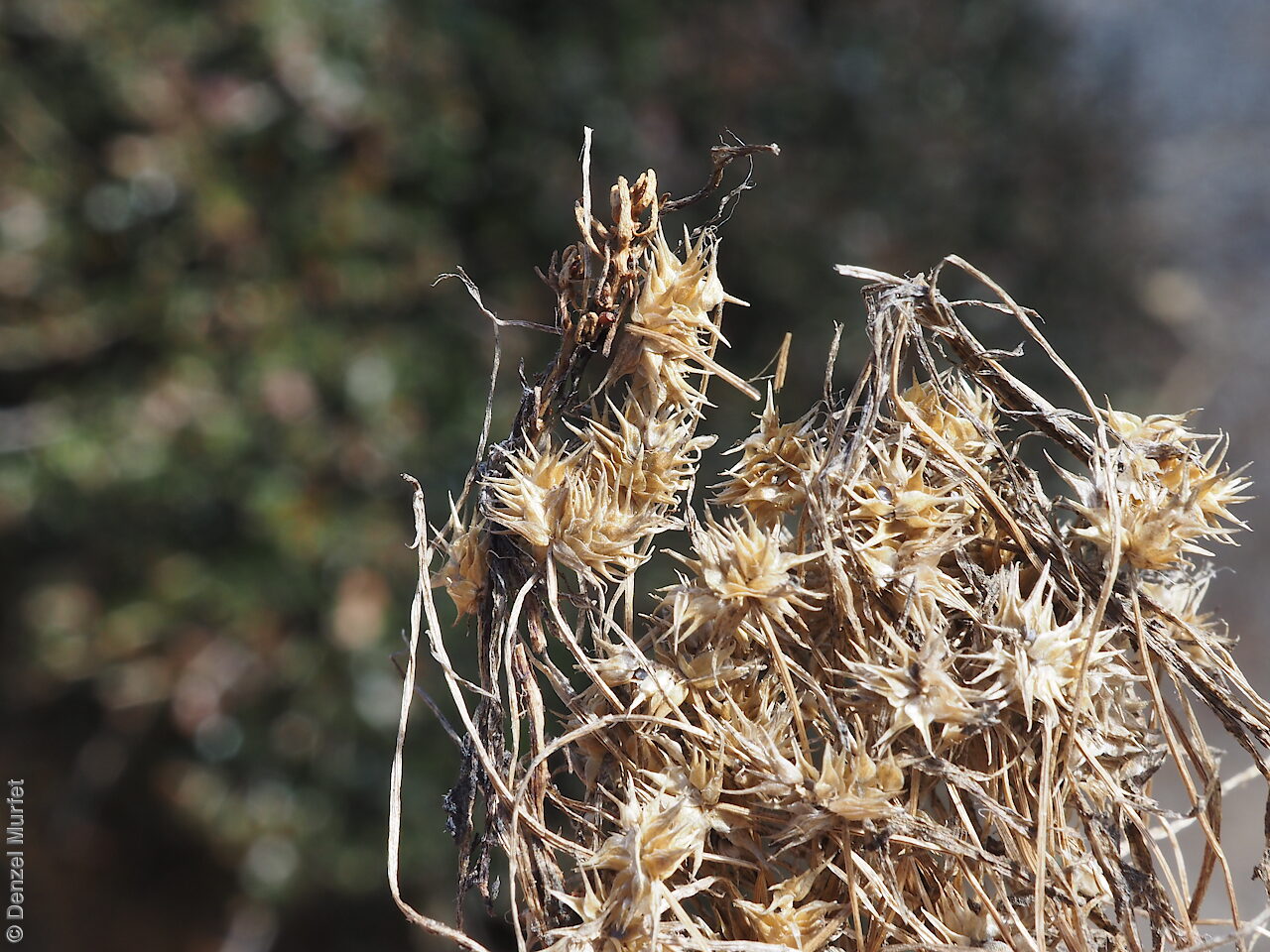
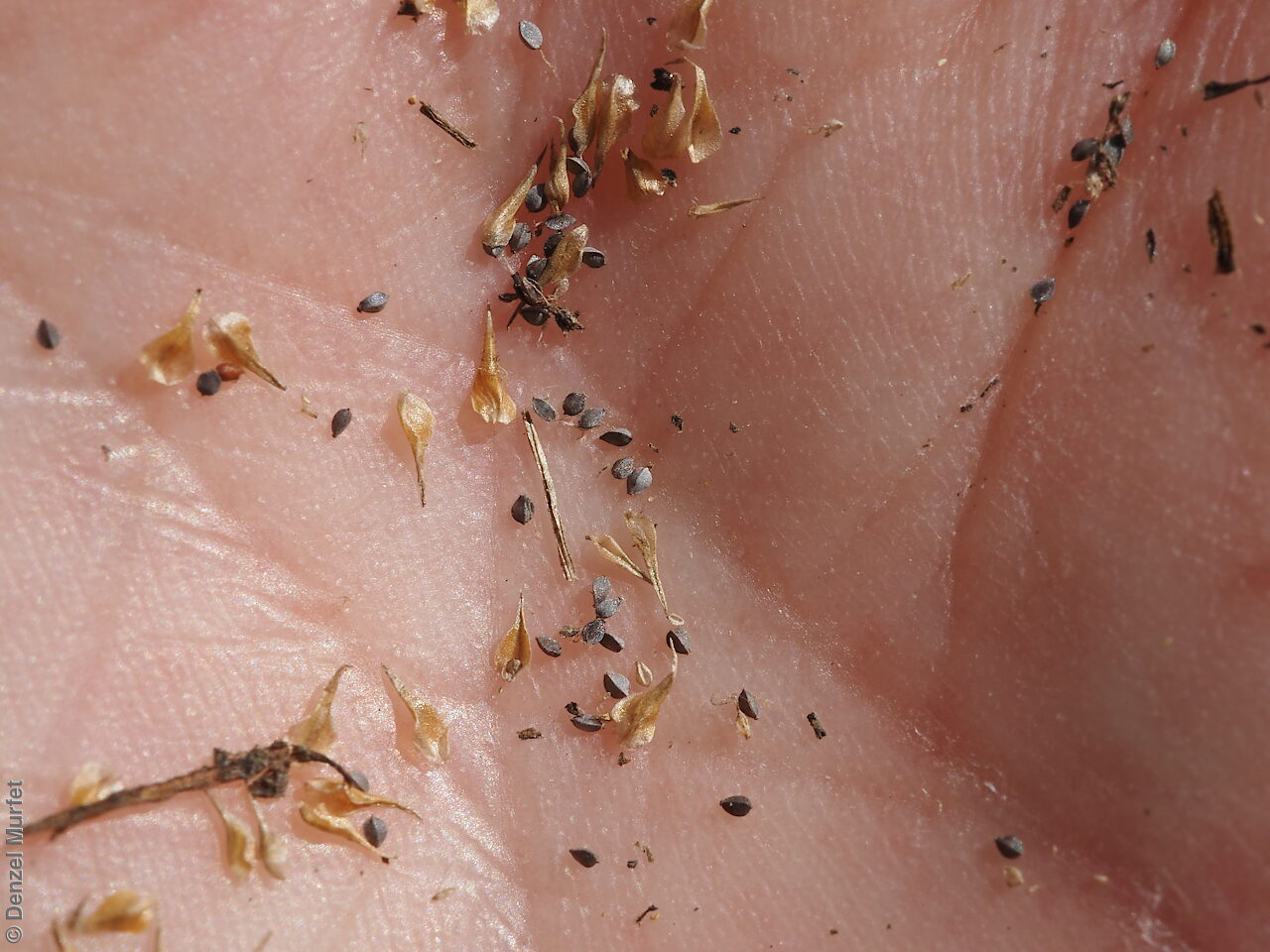
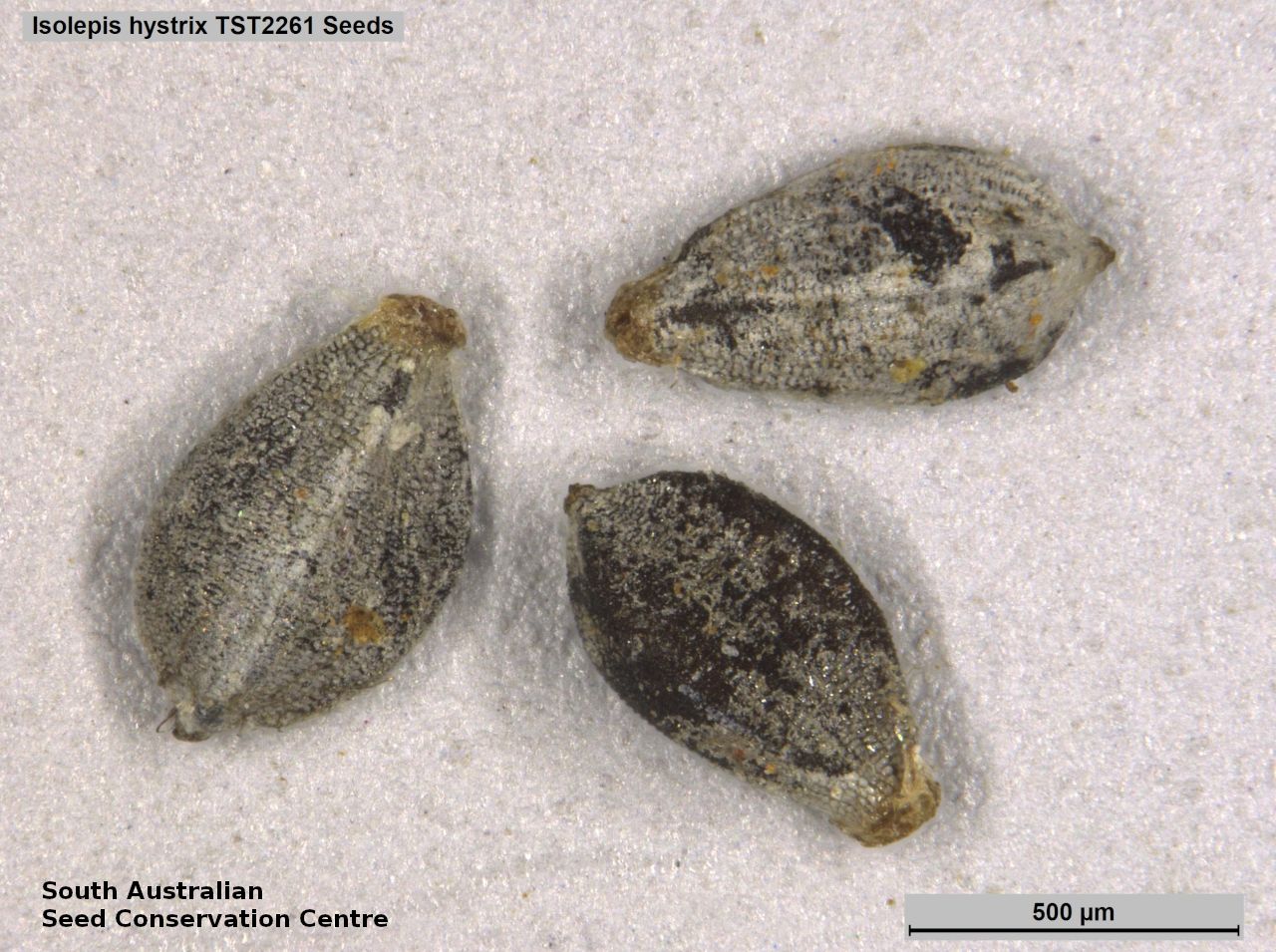
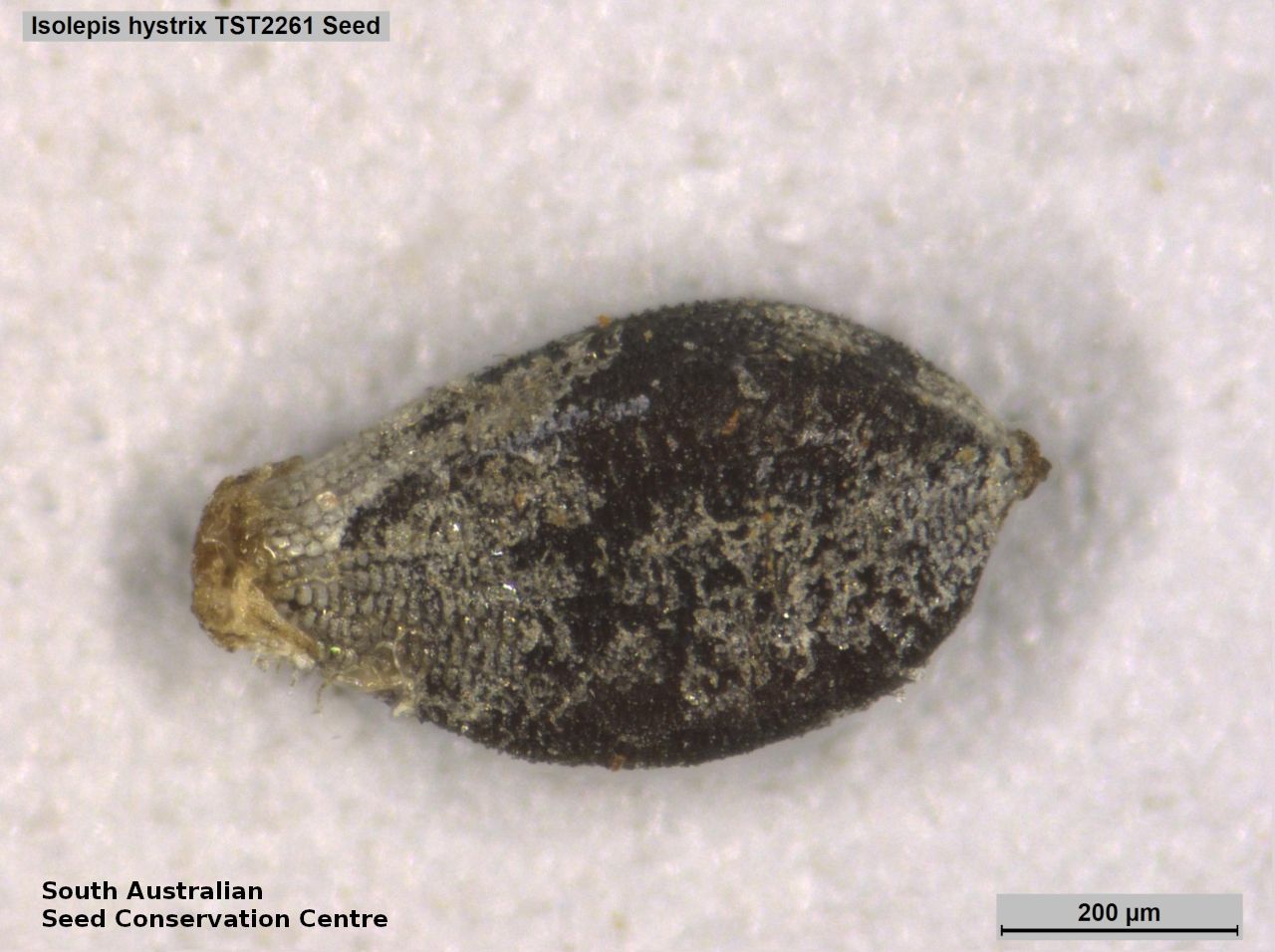


Botanical art
Prior names
Scirpus hystrix
Etymology
Isolepis, from the Greek 'isos', meaning equal and 'lepis', meaning scale, referring to the glumes. Hystrix ,from Greek meaning hedgehog, alluding to the bristly inflorescences.
Distribution and status
Scattered mainly in the southern part of South Australia, growing in seasonally wet open areas and roadside ditches. Also found in Western Australia, New South Wales, Victoria and Tasmania. Originally from South Africa and introduced in Australia.
Herbarium regions: Gairdner-Torrens, Murray, Southern Lofty, Kangaroo Island, South Eastern
NRM regions: Adelaide and Mount Lofty Ranges, Kangaroo Island, South Australian Arid Lands, South Australian Murray-Darling Basin, South East
AVH map: SA distribution map (external link)
Plant description
Small tufted annual sedge to 5 cm high. Stems slender, striate; leaf blades flat or plano-convex; striate, to 1 mm wide, as long as or longer than the inflorescence; bract leaf-like but broad below, usually spreading, to 2 cm long. Spikelets 1 or few; bristly, broad, to 5 mm long; 20-30-flowers; glumes to 3.2 mm long, green, with the broad-ovate lower part often reddish-tinged, terminating in a spreading attenuate portion at least as long as the basal part. Flowering between October and November. Isolepis hystrix is distinguished by the mucronate glumes, trifid styles and minutely papillose nutlets. Fruits are few brown bristly fruit-head in clusters at the end of stems. Seeds are dark- brown to black ovoid seed to 0.8 mm long and 0.4 mm wide with a reticulate surface. Seed embryo type is capitate.
Seed collection and propagation
Collect seeds between October and January. Collect fruits by picking off the mature heads, those turning brown and that come-off easily. Place the heads in a tray and leave to dry for one to two weeks. Then rub the heads with a rubber bung to dislodge the seeds. Use a sieve to separate any unwanted material. Be careful, as the seeds are very small. Seeds are black and hard. Store the seeds with a desiccant such as dried silica beads or dry rice, in an air tight container in a cool and dry place.